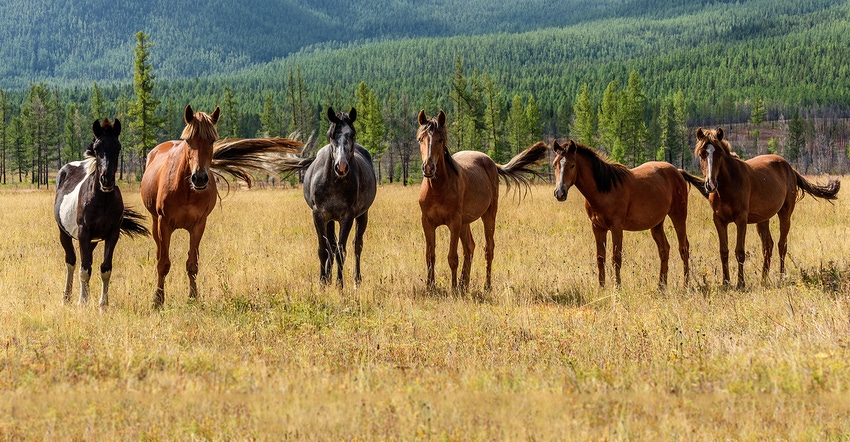November 20, 2017

The horse community in Oregon got some unwelcome news recently from Oregon State University. The OSU College of Veterinary Medicine diagnosed a horse with a form of equine herpes virus. This is a naturally occurring virus that can cause serious illness in horses, but can also infect llamas and alpacas.
According to officials, the animal is being treated for the neurotropic form of the virus, which is a mutated type of EHV-1 with a higher likelihood of causing neurologic disease. The infected horse is from the Coos Bay, Ore., area and it became acutely affected with weakness and staggering on Nov. 4.
The animal is isolated at the Lois Bates Acheson Veterinary Teaching Hospital at the OSU College of Veterinary Medicine in Corvallis, Ore.
EHV-1 can cause a number of issues in horses, including abortion in pregnant mares. Mares should be kept away from horses showing signs of the disease and also kept from horses that may have been in contact with exposed animals. There is a vaccine for the disease, but OSU officials note it does not prevent infection and is not known to prevent clinical signs of neurologic disease related to the neurotropic form.
In the statement announcing the find, Erica McKenzie, professor of large animal internal medicine at OSU, commented that horse owners should be aware that while EHV-1 is not transmissible to humans, people can spread the virus on their hands and clothing to horses, alpacas or llamas if they have been in contact with an infected horse.
The college has discontinued all elective surgical and medical services for horses and camelids (llamas and alpacas) through the end of November to minimize risk of spreading the disease.
Is your horse infected?
Here’s a look at symptoms for horses infected with EHV-1. It can start with weakness in the hind limbs, but can also include:
• uncoordinated, stumbling movements
• an unusual gait
• weak tail tone
• difficulty urinating, and dribbling of urine
• inability of geldings and stallions to retract their penises
• nasal discharge
• fever (rectal temperature at or above 101.5 degrees F in resting horses)
Horses showing any of those signs should be isolated, and owners should contact their veterinarians immediately.
In rare cases, EHV-1 has been known to cause blindness and central nervous system damage in alpacas and llamas. More information about the disease is available from the American Association of Equine Practitioners at aaep.org/guidelines/infectious-disease-control/equine-herpesvirus-resources.
Source: Oregon State University
You May Also Like




